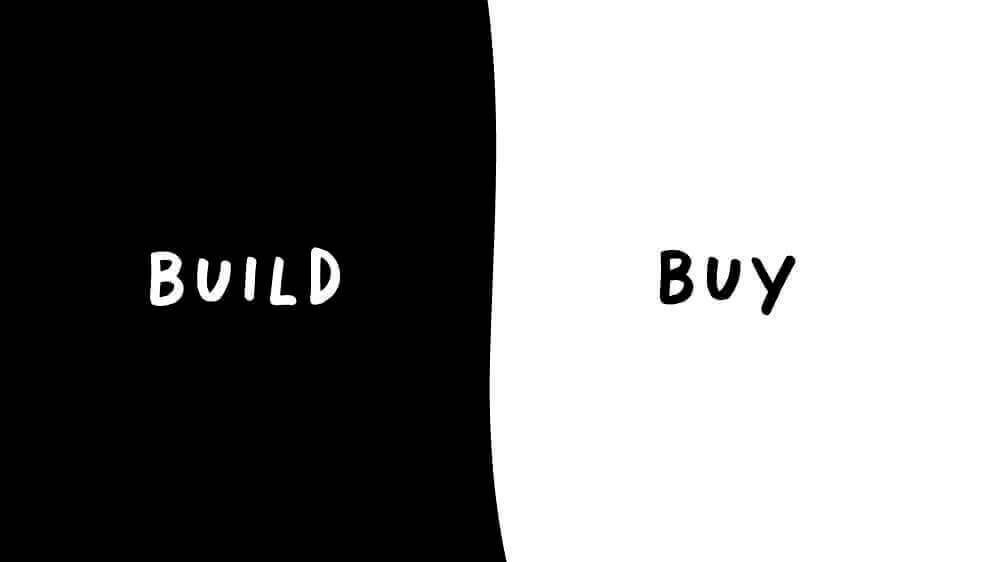What is a digital product, anyway?

And why should we care? This is a jargon-free guide to digital products, how they work, why they matter and what they do for customers and business.
Select a piece of music to suit your mood from a choice of the best classical recordings ever made; exchange fitness tips with a friend, arrange a run together, and record the run; recognise a loyal customer and offer them a better deal; Swap shifts with a colleague at the restaurant where you work and get the manager’s OK; transfer an excess balance to an interest-bearing savings account, automatically, as and when available; edit and break a news story instantaneously across three content channels using multiple content types, then spread it over social media.
These are all digital products. (See note 1, below)
We say ‘We make digital products’ and then we wonder ‘Why the blank looks?’. If you type ‘define:digital product’ into Google you’ll find no dictionary definition because there’s none that Google knows (as opposed to ‘define:infrastructure’). People name things to know them, create shared meaning, have useful conversations, and that also applies to what we do.It’s time to dig into the different shapes and textures of digital and give some sense of phylum, class, order and family to digital products.
Everybody knows Uber: let’s start there. Uber is defined by Wikipedia as “a peer-to-peer ride sharing, food delivery, and transportation network company” but we might better describe it as a very clever agency, the ultimate middleman, creating no value other than connecting people with what they want, when and where they want it.
Agency (a go-between who gets something done, at your convenience) is one of the principal purposes of digital product. The internet massively accelerates agency and access to both physical products and complex composites of physical and digital services, like Uber. A digital product is a far more efficient middle-man than a human.
The complexity in this Uber example is ‘which is the product?’. Is it the taxi ride or the application? As far as the customer is concerned the product is access to the ride, the ride itself and how it’s paid for; for the driver it’s access to customers, how they get paid and the terms and conditions of ‘membership’. Uber has inserted itself into a complex ecosystem involving a ready-made infrastructure of roads, taxis and their drivers, car finance, payment services, mobile phone networks and mobile phones. Uber’s success derives from its ability to create a marketplace that balances the needs and negotiating power of buyers (riders) and sellers (drivers). In Uber’s case, this involves smart software that exploits the features of the mobile phone, clever business design and a degree of coercion.

Let’s stop right there. It’s complicated because digital products don’t sit still and aren’t discrete items like soap, washing machines or machine tools. They are often just one or more components in complex value chains affecting both physical and digital space (a tractor, a camera, a retail store, a restaurant are all, these days, part digital products, their differentiation powered by software). These are hybrids that won’t sit still in simple categories; they squirm, they want to do everything. Not for nothing are computers called universal machines.
Digital shifts shape: it enables highly targeted and customised offers in terms of pricing, configuration and promotion of products. Our product offer can be adapted, continuously in real time, according to what the data is telling us about customer need and behaviour. While physical objects evolve in discrete steps in a process of obsolescence and replacement, digital products morph continuously with new releases of code or by learning from the data they create, store and manipulate. This is why making a digital product with a physical product mindset (a mindset of ‘let’s make a finished thing’) leads to product failure. Understanding this difference is an important goal of digital transformation.
The result is that digital has overcome the inevitable commoditisation of physical goods by creating a layer of differentiation. Software drives business because information creates new value around or in place of material goods and services. (We note, however: digital also disrupts markets and livelihoods, opens its users to fraud and privacy invasion, increases consumption and waste, accelerates obsolescence, creates negative as well as positive feedback loops, distorts politics and fosters monopolistic commerce).
There are six principal ways in which digital products satisfy the needs of customers and the goals of business:

Find: digital products help us find things (and help things find us).
With infinite shelf space and so many things that they all get in each other’s way, the simple act of finding is a primary facility and one reason why Google is winning the internet. More of our time on the net is spent searching in logical space-time for people, places, events, services, material things and of course the mass of digitised words, pictures and numbers that live on the web. This is what used to be called the index, catalogue, directory, map, timetable, diary…and advertising.
Make: digital products also help us do useful work, making things, often collaboratively.
This is the category of productive tools that exist to help us create and communicate together. This is why the internet was invented in the first place as a nexus of collaborative research into the science of warfare: to write, review, recommend, talk, message, schedule, forecast, calculate, draw, image; and then to publish and distribute what we’ve made together at virtually no cost. This is Google Docs and Sheets; Skype, Slack, and Flickr; Medium and Soundcloud; a chunk of Facebook and one half of Youtube (Make and Play so often go together); it’s also Sleepio and Nike Plus and every other behaviour change application.
Play: digital products help us to play & learn, alone or together.
This is the class of networked software that involves consumption, entertainment and aspects of education. Our verbs here describe passive actions (watch, listen, learn) and the value derives from content rather than tools, but because this is software, play products habitually stray into discovery and sensing and making, not least through individual competition with machines or other people. Duolingo is learn and play: its offspring Tinycards adds making.
Exchange: Digital products provide agency, access and exchange.
Having discovered or been matched with what we want, we need to purchase, subscribe, sign up, reserve, have it delivered, gain access. There are few pure access plays. Amazon, even in its early days, was a combination of find and buy a physical book. The new Prime/Alexa-armed Amazon adds ‘Play’ and ‘Sense’. Software is a muddle! Like search, direct access to goods and service is increasingly an integrated component in digital products - from advertising in Candy Crush to subscription upgrades in Netflix to buying tools in Adobe Creative Suite; likewise, so is using an iPad app to sign-on for a new bank account, slashing the time, effort and therefore cost involved to the bank if not the customer. Service automation is a significant component of agency and exchange because it makes businesses and certain customer interactions more efficient by removing people and bureaucracy (through smarter use of data) from the process.
Sense and respond: Digital products enable us to sense events in both the logical and physical world and to respond and so influence outcomes.
The connected device, a.k.a. the internet of things, is a vast emerging product set. The interface between the logical and physical worlds involves sensing and measurement as well as control, tracking everything that we (and machines) do on the internet or in physical space. Software and electronics can recognise faces (and customers); sense, measure and record temperature; store and manipulate sound; detect and manage machine performance; analyse physical forces. In response, the internet opens and closes switches; adjusts settings, illuminates displays; sets off alarms; responds to touch; authenticates people and their money. The most important and ubiquitous connected device is the mobile phone, which enables us to combine an understanding of physical context with knowledge of past behaviour, thereby amplifying our ability to predict intention and desire. A grain sack in a container with a bluetooth enabled humidity monitor is a connected product, as is the drone that photographed the field where the grain grew and supplied the data to an organic authentication website, the tractor that planted the seed according to positioning data supplied by a satellite feed, and quite probably the derrick that shifted the sack onto the (connected) truck that took it to market.
Few real products confine themselves to being just one of these six types. The combination of basic functionality produce a variety of patterns, uses and effects across the hierarchy of utilitarian, emotional and higher needs. There are other dimensions: free, freemium or paid? B2C or B2B (the latter has, typically, a higher value per customer and a buyer who may not be the consumer); dependency on network effects to deliver value; dependency on exclusivity and scarcity to deliver value; a standalone proposition (like Skype, for example) or a service layer in a bigger product ecosystem.
More usually there will be a combination of functions, actors, devices, channels that raises difficult questions about ‘What is the product?’, and therefore ‘What is the product team?’. Think about air travel and the variety of owned and third party products and services that combine to help a passenger get from A to B. Even within a single airline there might be multiple digital ‘products’ involved in the entire customer experience: those for selecting and buying seats, managing the flight, entertainment, points and rewards, etc., delivered across multiple channels and devices.
’What kind of digital product is this?’ is rarely a simple question but it’s an important one for understanding development and investment questions. How well a business organises to design and develop the full set of infrastructure, channels and experiences will depend on how well it understands the component parts of its digital product portfolio and their inter-dependencies - and whether it has an accurate and shared way of talking about this.
Last word
Digital transformation is the most important challenge facing business today, but sometimes we forget why; it’s purpose is to create the organisational structures and capabilities that enable a business to exploit the competitive advantage that digital products can create. It would be tiresome to obsess on a definitive taxonomy of digital product types for any other reason; this is more a way of starting a conversation about differences that matter, and about remembering the purpose of innovation.
Note:
1. The examples cited were all created by Made by Many in the UK, Europe and USA - a small selection from over 70 digital products that we’ve taken to market in the last decade. Read some of our case studies here.
:: If you'd like to talk to us about product strategy and execution for your business, drop us a line at newprojects@madebymany.com
Continue reading
How to use prototyping to bust through the constraints of the business model
Businesses rarely know upfront what they need to succeed in digital: the best way to learn is through prototyping.
Smart homes, chatbots and load testing at Front-End London
The latest FEL meetup saw lightbulb moments, a chatbot built in Flow, and a smart burglar alarm.
“Build or Buy” is the wrong question: What would FAANG* do?
Should you shape your company to a piece of software, or shape the software to your company?


